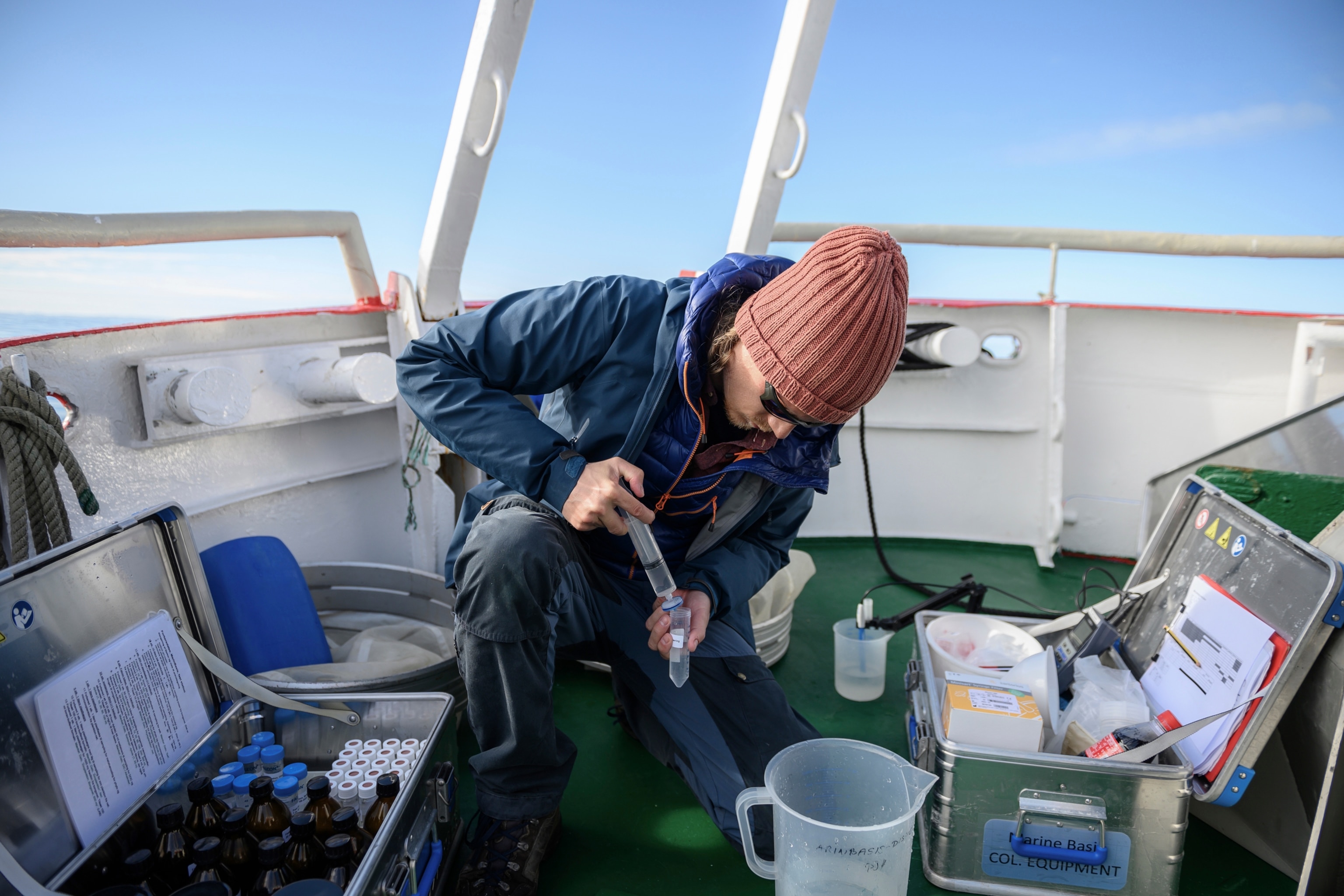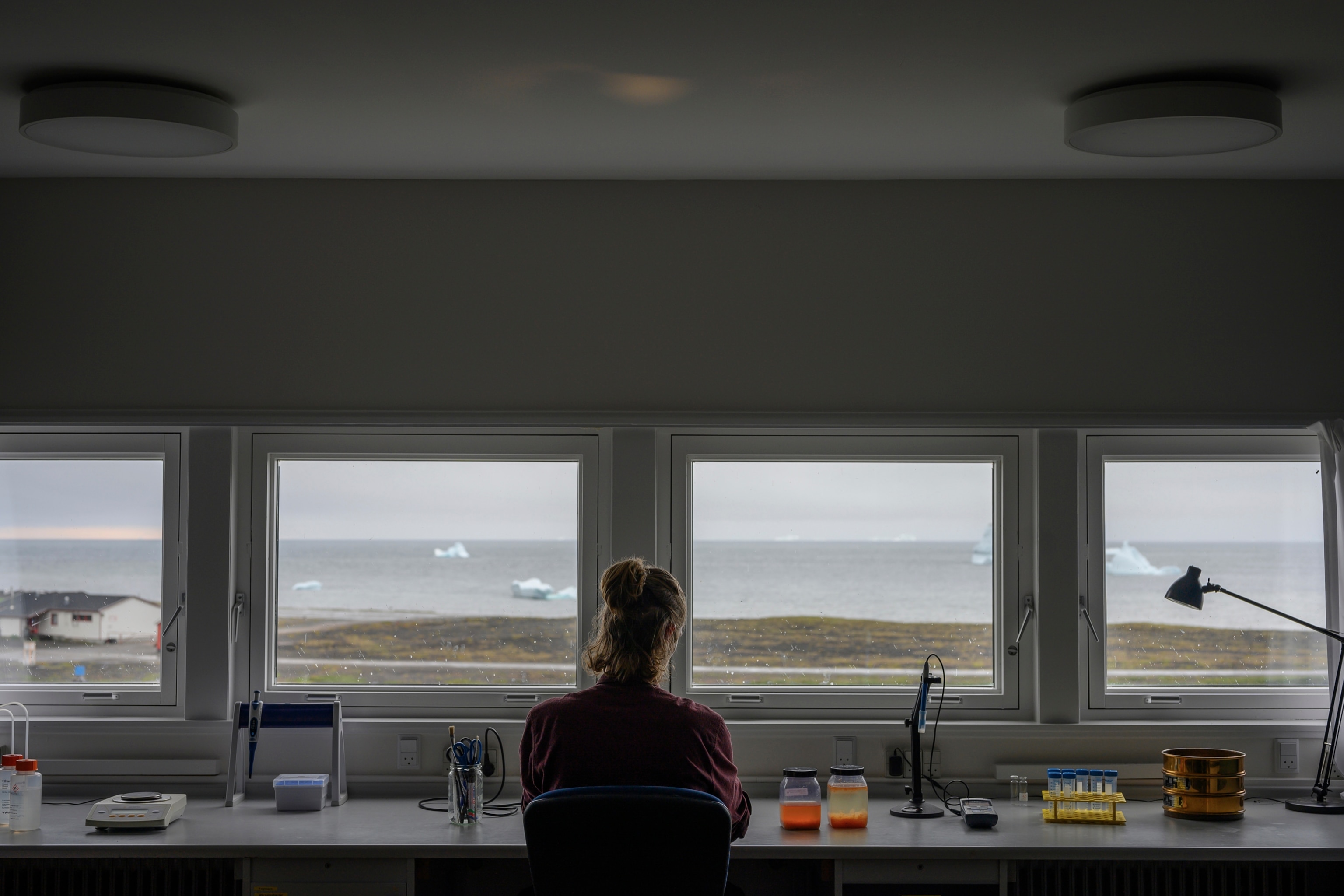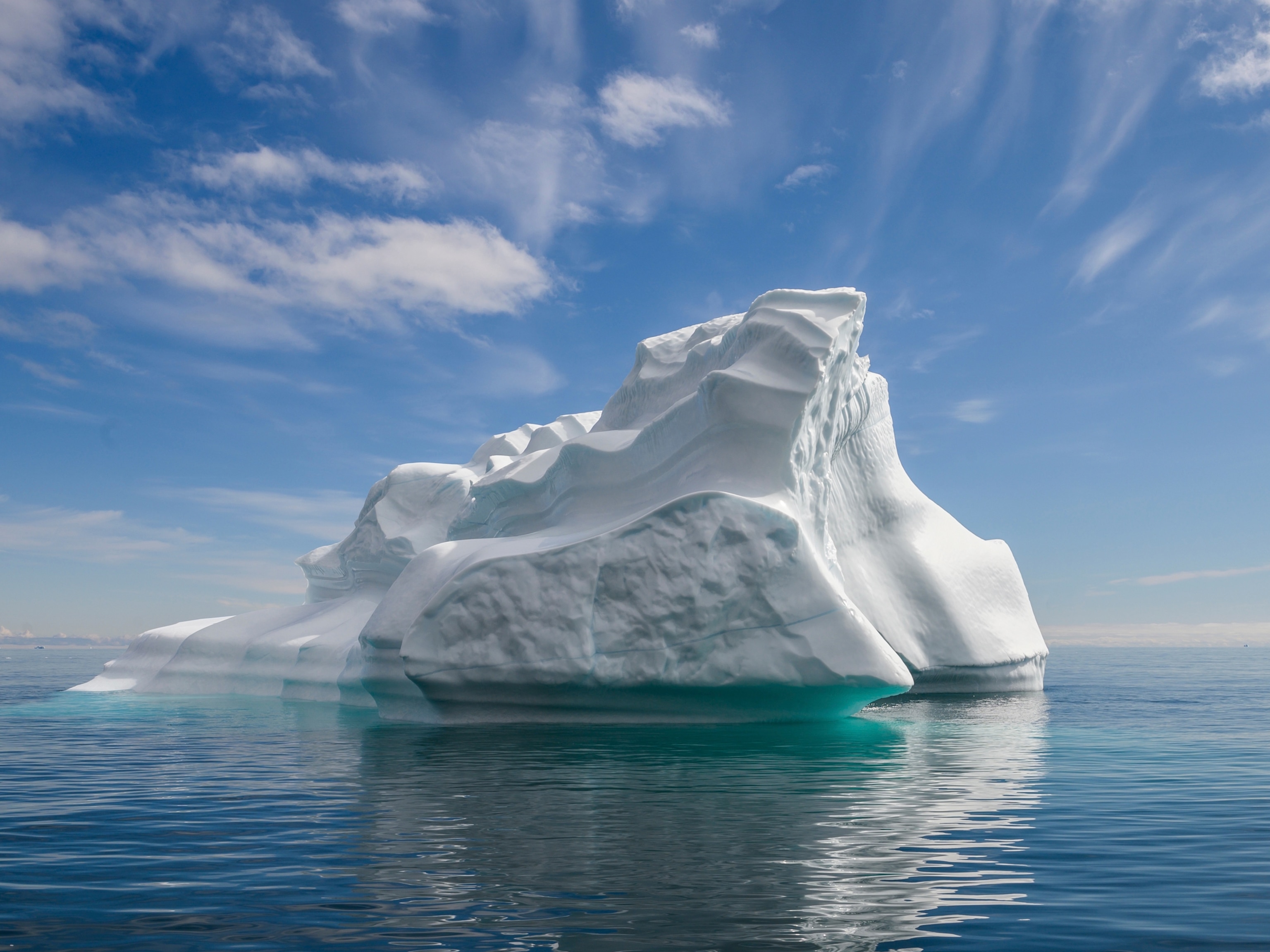The microbial shifts that could change the Arctic forever
Tiny microorganisms in the Arctic are reacting to the warming climate—and that could have consequences for all life on Earth.
Martin Nielsen reaches over the gunwale of the Porsild and grabs the 100-meter-long bongo net as it is winched out of the Arctic water. He’s helped by one of the crew, Eli Martensen—a ruddy-cheeked Inuit fisherman who’s a regular on these monthly field excursions.
The net is designed to trap some of the ocean’s smallest organisms: zooplankton. As it is dragged on board, Nielsen, a molecular biologist and currently scientific leader of Arctic Station on Disko Island off the coast of western Greenland, transfers his catch to a sample jar and holds it aloft. Myriad translucent shrimp-like creatures drift in the water as if in a snow globe.
When you talk about microorganisms in the ocean, you have to realize there are so many of them,” Nielsen explains. “They are a vital part of the food chain.”

Besides bacteria and viruses, zooplankton (animals) and phytoplankton (plants) are the most abundant creatures in the ocean. They’re a primary food source for fish and marine mammals, including large cetaceans such as humpbacks and right whales. In a single day, these giants can consume nearly a thousand kilograms of krill, a species of zooplankton, and the small fish like capelin that feed on them.
Scientists have been sampling and studying microorganisms in Disko Bay off the coast of western Greenland for years now. “Arctic Station has been here for more than 100 years,” Martin explains. “When you do science it’s really important to have these long continuous measurements.”
Since 1906, researchers here have been diligently logging data on everything from soil composition to cloud cover to climate. And while scientists are cautious about drawing conclusions from this data, two things are certain: the Arctic is warming faster than anywhere else on the planet, and its ecology is undergoing major upheavals across extremely short time periods.

Back at Arctic Station, Nielsen peers through a microscope at a petri dish filled with copepods—tiny crustaceans that are the dominant members of pelagic zooplankton. A cluster of icebergs is visible through the window. Whales usually gather here to feed in the summer, but this year, they haven’t appeared, which suggests the capelin they feed on haven’t appeared either. “We are seeing a shift in the population dynamic,” Martin says. “A shift in what kind of species are there and what kinds of species are dominant.”
Much of this has to do with the changing climate. “Phytoplankton and zooplankton are highly dependent on the climate …so up here we see that the extent of the sea ice is really important for these small communities.”
According to Nielsen, some species of phytoplankton and zooplankton may flourish under the changing conditions, while others may disappear. This has a knock-on effect for creatures that rely on them—“through fish to whales to humans.”Recent research in the Fram Strait between eastern Greenland and the Norwegian archipelago of Svalbard suggests that as ice-melt accelerates, highly nutritious ice-dwelling algae may be superseded by phytoplankton that thrive in open water during the summer months. The latter have lower lipid levels than their icebound cousins that comprise a nutritious feast for krill and fish, which in turn sustain the whales that feed here. “Everything is just unstable and so hard to predict,” Martin concludes.
Birgitte Danielsen is a geographer specializing in soil science and climate change. She also happens to be Martin’s girlfriend. “I moved to the Arctic to start my fieldwork for my PhD about Arctic subsurface gas dynamics,” she explains. That fieldwork involves trekking 45 minutes to a site up on the tundra just beneath a glacier. Here, she meticulously measures and records levels of CO2 and methane at different depths. “We want to look into how these extreme winter warming events affect the soil and microorganisms in terms of how much carbon they’re going to release to the atmosphere as CO2.”

As with marine microorganisms, it is difficult to draw definitive conclusions from this data. But it is very possible that warming is creating a feedback loop, where microbial activity in the soil increases, adding to greenhouse gas emissions. “After the small marine life, I think maybe soil microorganisms are the next most abundant living things on earth,” Birgitte says. “And you can see that temperature makes a big difference.”
What all this means for Greenland and the Arctic is still unclear—but in such an extreme environment, at the very frontline of climate change, the unpredictability is deeply concerning. “We see with the data and the science that the extent of sea ice is decreasing and becoming unstable, and we hear the same from the local people who are actually using the sea ice in their daily life,” Martin says.
Greenland’s ice sheet is the second largest in the world after Antarctica. The island is currently the world’s biggest contributor to sea level rise globally, having lost 3.8 trillion tons of ice between 1992 and 2018 according to a study by NASA and the European Space Agency. The research projects sea levels to rise by three to five inches by 2100 from the Greenland ice sheet alone, causing 100 million humans to experience flooding annually.
Birgitte and Martin have been on Disko Island for more than a year, through the winter where the sun barely skims the horizon to the high summer, where it barely sinks below it. Their bungalow, close to Arctic Station’s labs and research facility, is a little oasis filled with plants they brought with them from Denmark. But being here has made them acutely aware of their own environmental impacts.

“Moving here we realized that our daily habits actually affected the climate,” Birgitte says.
“So, we try to be sustainable in the way we live; we try to save energy whenever we can,” Martin continues. That includes switching off lights, reusing and recycling when possible, composting organic waste—and washing clothes on shorter cycles at lower temperatures.
Martin gazes out of the window towards an ocean teeming with microorganisms—the foundation of the ocean food chain. “You know, small things really matter,” he muses. “The climate is warming; it is happening and we all need to do something about it.”
In Europe, on average, up to 60 percent of the greenhouse gas emissions from laundry come from heating the water in our washing machines—more than packaging or ingredients. Dialing down the temperature by just a few degrees can dramatically reduce energy waste.



